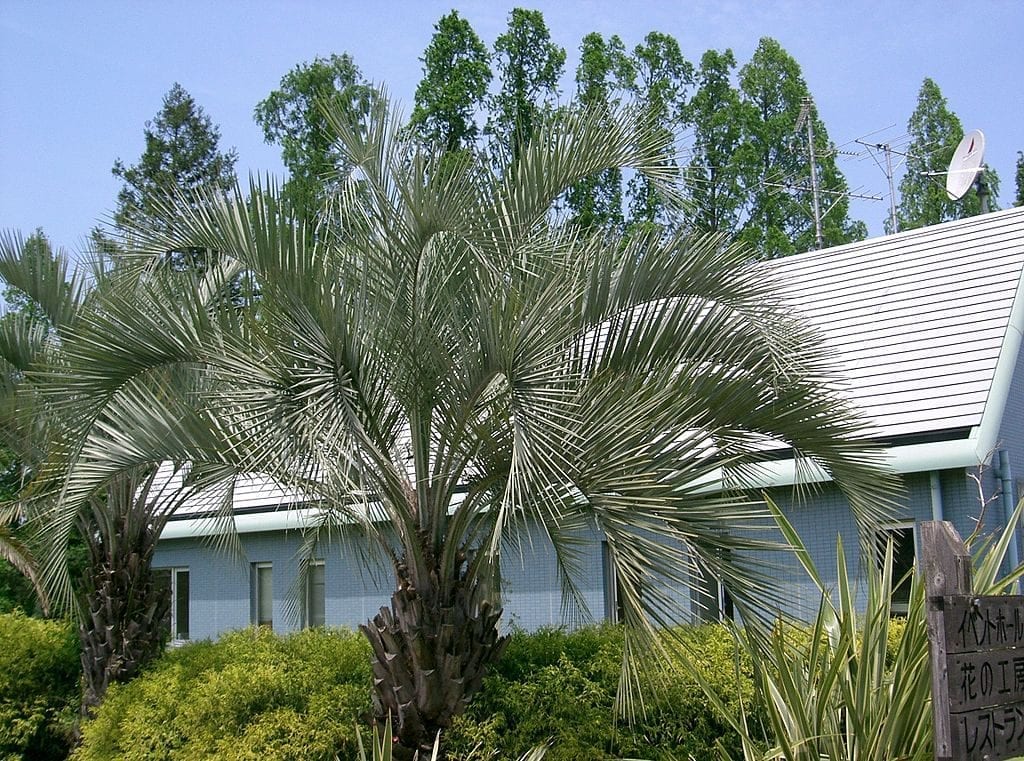
La butia capitata It is one of the most decorative, adaptable and resistant pinnate-leaf palms that we can find. In addition, it does not grow very much, which is why it is ideal to grow in almost any type of garden.
As if that were not enough, it is easy to multiply by seeds and also to keep healthy. So without a doubt we are talking about a very interesting plant.
Origin and characteristics
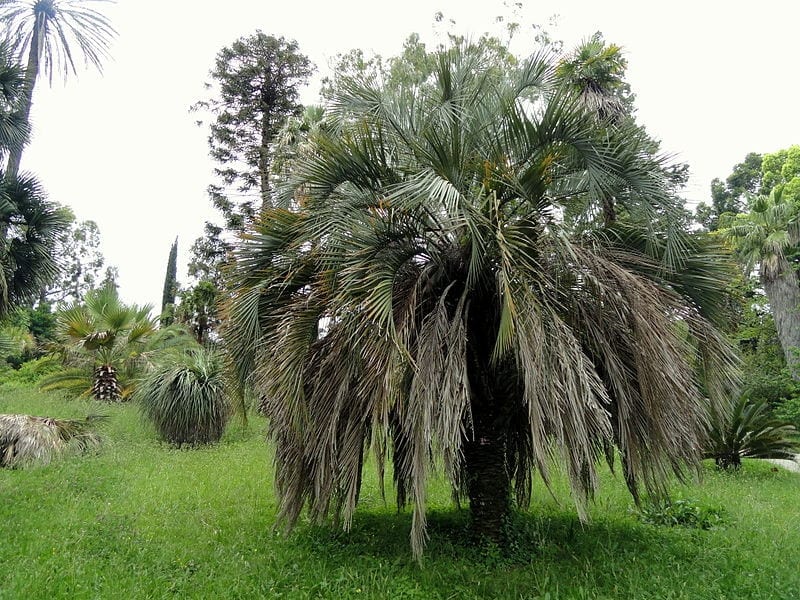
Our protagonist is a palm native to South America, specifically from the northeast of Argentina, east of Uruguay. It is endemic to central-eastern Brazil. Its scientific name is butia capitata, although it is popularly known as the capitata palm or jelly palm. Grows to a height of up to 5 meters, with a trunk of 30 to 45cm in diameter.
Its crown is composed of 11-20 arched and pinnate leaves of glaucous color that measure up to 3 meters. The flowers are grouped in inflorescences formed by 100 floriferous branches of 8 to 30 cm in length. The fruit is yellow when ripe, oblong in shape, and contains a single rounded seed inside.
What are their cares?
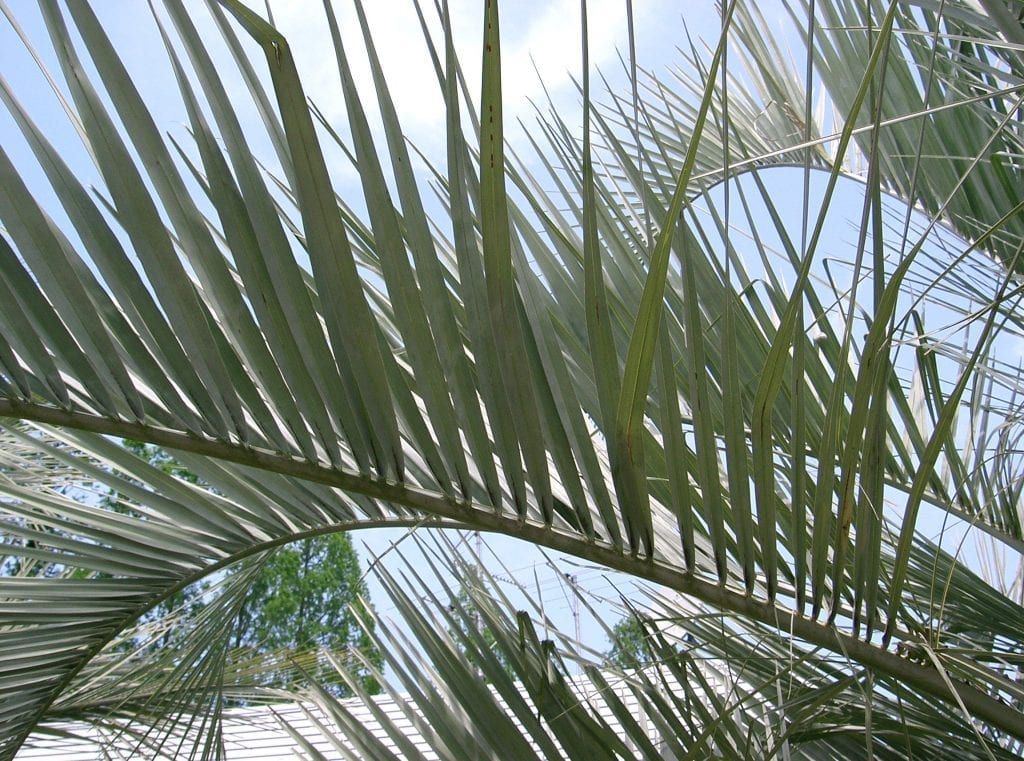
If you want to have a copy, we recommend that you provide it with the following care:
Location
La butia capitata has to be outside, in full sun.
Earth
- Flower pot: universal culture substrate mixed with 30% perlite. You can get the first here and the second here, although you should know that due to its characteristics it is not a palm tree that can always be kept in a container.
- Garden: grows in all types of soils, but prefers those with good drainage. In the event that you have a piece of land that has a difficult time absorbing the water, make a 1m x 1m planting hole, and mix the soil with perlite in equal parts. In this way, it will be able to grow well.
Irrigation
It is a palm tree that resists drought quite well. But so that there are no problems it is highly recommended, especially if it is grown in a pot, check soil moisture before watering. To do this you have to do the following:
- Using a digital moisture meter: when you enter it, it will tell you instantly how wet the portion of earth that has come into contact with it has. But to make it more useful you should introduce it in other areas (closer to the plant, further away), since the soil does not dry out everywhere as fast.
- Dig a little around the plant- The surface of the soil loses moisture rapidly when exposed to more, which often creates many doubts about when to water. Because of this, you can dig about 5-10cm around the palm tree and see how the soil really is.
- Weigh the pot once watered and again after a few days- Wet soil weighs more than dry soil, so this difference serves as a guideline.
This logically can only be done when the plant is young, because as it grows it weighs more and more 🙂.
Anyway, to have more or less an idea, say that it is recommended to water about 3 times a week in summer, and every 6-7 days the rest of the year. In the case that it is in the garden, from the second year it can be watered once or twice a week.
Subscriber
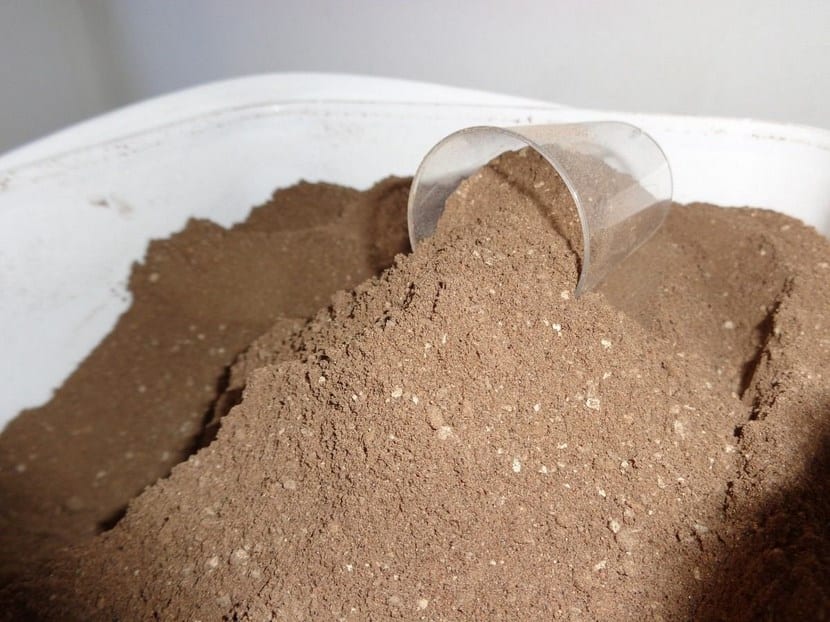
Guano powder.
From early spring to late summer It has to be paid with Organic fertilizers, like guano for example (you can find it in powder here and liquid here). Of course, it is important that you follow the instructions specified on the product's packaging since it is a highly concentrated fertilizer, so much so that if you overdo the dose you could "burn" the plant.
Multiplication
La butia capitata multiplies by seeds in spring. The way to proceed is as follows:
- The first thing to do is clean them and place them in a glass of water for 24 hours. Thus, you can discard those that do not work - they will be the ones that sink - and keep the others.
- Afterwards, a pot of about 10,5 cm in diameter must be filled with universal growing substrate, and water thoroughly.
- Next, a maximum of two seeds are placed in the pot, and they are covered with a thin layer of substrate so that they are not exposed to direct sunlight.
- Finally, it is watered again and the pot is placed outside, in full sun.
If all goes well, they will germinate in two to four months at a temperature of 20-25ºC.
Plagues and diseases
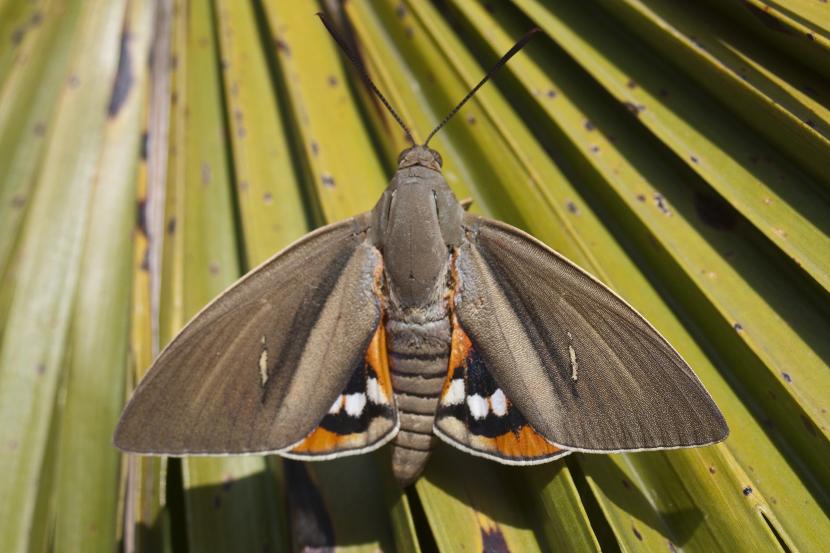
paysandisia archon
It is very resistant, but unfortunately both the Red weevil and paysandisia Archon they can harm you. The first is a weevil (a kind of beetle) whose larvae dig galleries in the trunk while feeding on it; the first is a moth with a very similar appearance to a butterfly whose larvae also dig galleries but in the bud, and also make holes in the developing leaves that have not yet emerged.
If you live in an area where they have already arrived, or where they are about to do so, the palm tree should be treated during all warm months with Imidacloprid and with these remedies.
Pruning
It's not necesary. Dry leaves should only be removed in late winter or mid / late autumn.
Rusticity
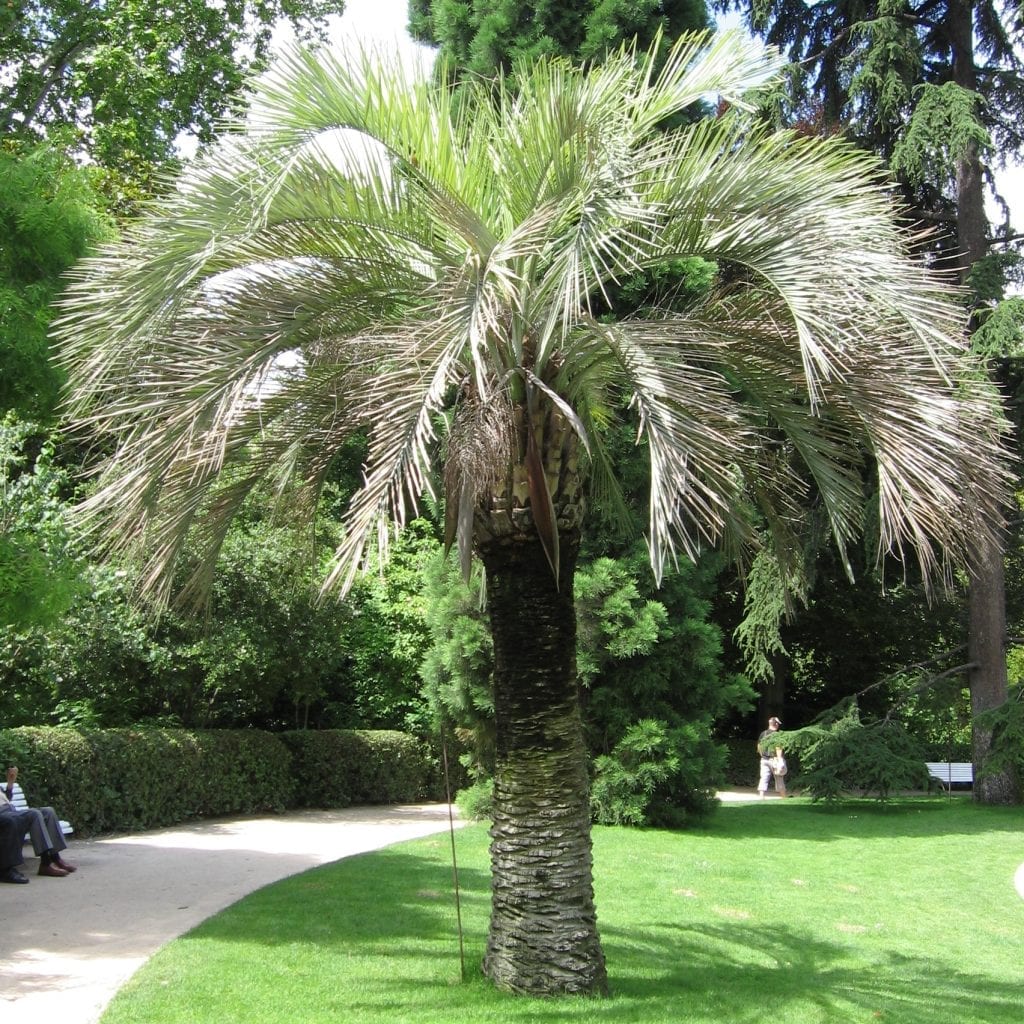
Resists cold and frost up to -12ºC. It can be grown without problems also in hot tropical climates.
What did you think of butia capitata?